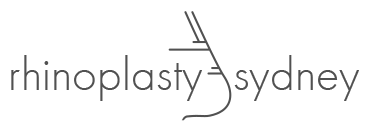Rhinoplasty surgery, commonly known as a “nose job,” is one of the most sought-after cosmetic procedures worldwide. Whether you’re opting for rhinoplasty to improve your nose’s appearance or correct a deviated septum or breathing problems, understanding the recovery process is essential for a successful outcome. One of the most common questions patients have after nasal surgery is: When will my nose feel normal after rhinoplasty?
This question is particularly important, as the journey to full recovery can vary greatly depending on the individual and the specifics of the rhinoplasty procedure. In this blog, we’ll delve deep into the healing process, provide insight into when you can expect your nose to feel “normal” again, and offer practical tips on managing the recovery process effectively.
Understanding Rhinoplasty Surgery
Rhinoplasty is a delicate and complex procedure performed by a skilled plastic surgeon. It involves reshaping the nasal structures, including the nasal bones, cartilage, and nasal skin, to enhance the appearance or functionality of the nose. The surgery can be done for cosmetic reasons, such as improving the shape of the nose, or for medical purposes, like addressing a deviated septum or breathing difficulties.
The procedure is typically done under general or local anesthesia, and most patients opt for rhinoplasty as an outpatient procedure, meaning they can go home the same day. However, rhinoplasty surgery is still a serious procedure, and the recovery process requires careful attention and patience.
The Rhinoplasty Recovery Time
After rhinoplasty surgery, patients can expect discomfort, swelling, and bruising. The recovery period varies from person to person but typically lasts several weeks to months. During this time, your body will undergo significant changes as it heals.
The First Week Post-Surgery: Initial Recovery Phase
You will likely experience facial swelling and bruising during the first week after rhinoplasty. The nose is especially swollen immediately after the procedure, and it can be difficult to gauge the final results of the surgery right away. This initial swelling is a natural part of recovery and usually subsides over time.
Here are some key things to expect during the first week:
- Swelling: Facial swelling, particularly around the eyes and nose, is common. This swelling may increase in the first few days, but it will gradually start to subside. Nasal swelling can affect your overall appearance and make your nose feel different from what you expect.
- Bandages and Splints: Your surgeon will likely apply a splint or bandages to the nose to support it during the early healing stages. This helps protect the nose and maintain its shape while the nasal tissues heal.
- Pain and Discomfort: While most patients experience mild to moderate discomfort, pain medications prescribed by your surgeon can help manage this. It’s crucial to follow your surgeon’s instructions to avoid overexerting yourself.
- Breathing: During the first week, you may find it difficult to breathe through your nose due to the swelling and nasal packing (if used). It’s important to refrain from blowing your nose or doing anything that could increase nasal pressure.
The Second Week: Decreasing Swelling and Improved Comfort

During the second week:
- Reduced Swelling: While there may still be some swelling, the facial swelling will be significantly reduced. The shape of your nose will begin to emerge, though it might not yet be the final result.
- Resuming Light Activities: By this time, many rhinoplasty patients can return to light, non-strenuous activities. However, you should still avoid vigorous exercise or any activities that might increase blood flow to the nose and lead to more swelling.
- Post-Surgery Appointments: It is important to attend follow-up visits with your plastic surgeon. During these visits, the surgeon will assess the healing process, remove any splints or bandages, and monitor any nasal breathing issues or complications that may arise.
The First Month: Settling Down
By the first month after rhinoplasty, you’ll notice significant improvements in the appearance and feel of your nose. Swelling will continue to decrease, and the initial discomfort will subside.
- Nasal Swelling: While you may still have some residual swelling, the majority of swelling should have subsided by now. Nasal tissues are healing, and nasal breathing should be much easier.
- Nasal Shape: By this point, you will have a clearer idea of your nose’s shape and alignment with your facial balance. However, the final results may still take time to materialise fully.
- Return to Normal Activities: Many patients can return to normal activities after the first month. However, avoiding activities like contact sports or vigorous exercise is essential to the nose’s healing process.
Several Weeks to Several Months: Continued Healing
The recovery process after rhinoplasty is ongoing. While the most noticeable swelling will have gone down by the end of the first month, full healing can take several months to a year. The nasal tissues and skin will continue to settle and reshape, and any residual swelling will gradually subside.
During this time:
- Residual Swelling: You may notice a small swelling around the nasal tip or along the nasal bones. This is completely normal and is part of the recovery process. Residual swelling can last for several months, sometimes up to a year, depending on the extent of the rhinoplasty procedure.
- Final Results: Your rhinoplasty results will become more apparent as time passes. The nose will feel more “normal,” and you’ll enjoy the full benefits of the surgery once the swelling is gone and the nasal structures have fully healed.
Factors Affecting the Healing Process
Several factors can influence how quickly your nose heals after rhinoplasty, and it’s essential to remember these during the recovery process. Some of these factors include:
- Surgical Approach: The type of rhinoplasty procedure you undergo (open vs. closed) and whether any additional surgical techniques are used can affect the healing time.
- Nasal Skin and Tissues: The elasticity and health of your nasal skin and tissues can influence how quickly they heal. Those with thicker nasal skin may experience longer swelling periods.
- Follow-up Appointments: Regular follow-up visits with your surgeon are crucial for monitoring the healing process and ensuring no complications, such as poor wound healing or infection.
- Lifestyle Factors: A healthy diet, adequate rest, and avoiding smoking can improve blood flow and healing.
Key Tips for a Successful Rhinoplasty Recovery

- Keep Your Head Elevated: Elevating your head, especially in the first week after surgery, helps reduce swelling and promotes better blood flow.
- Avoid Strenuous Exercise: While returning to your usual routine is tempting, avoid vigorous exercise and strenuous activities during the early stages of recovery. This will prevent swelling and allow your body to heal.
- Avoid Sun Exposure: Direct sun exposure can irritate nasal skin, leading to increased swelling and a delayed recovery. Always wear sunscreen when going outdoors.
- Follow Post-Operative Instructions: Follow your plastic surgeon’s instructions carefully, especially regarding medication, cleaning, and activity restrictions. This will help reduce the risk of complications and ensure a faster recovery process.
When Will My Nose Feel Normal After Rhinoplasty?
So, when will your nose feel normal after rhinoplasty? It varies for each person, but most healing occurs in the first 3-6 months. While your nose will feel more normal after the first few weeks, the final results can take up to a year to become fully visible. Nasal swelling, especially at the tip of the nose, may persist for several months, but with proper care and time, your nose will eventually settle into its new shape and feel completely normal.
Contact Us for Expert Care
Rhinoplasty is an exciting step toward enhancing your facial appearance or nasal function, but following the recovery process carefully is essential to ensure the best results. If you have any questions about rhinoplasty or need advice on your recovery, please don’t hesitate to contact us.
Please call us at (02) 8880 9037 for expert care and immediate assistance with your rhinoplasty needs. We are committed to helping you achieve the best possible results and a smooth recovery journey.
References
https://www.plasticsurgery.org/cosmetic-procedures/rhinoplasty
https://www.mayoclinic.org/tests-procedures/rhinoplasty/about/pac-20384532
https://my.clevelandclinic.org/health/treatments/11011-rhinoplasty#:~:text=You’ll%20have%20swelling%20for,is%20usually%20after%20one%20year.


Recent Comments